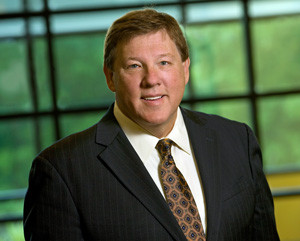
What would happen to the grid if an adversary detonated a nuclear weapon high above us?
This once-obscure question has emerged as a primary consideration of national security and grid reliability and resilience.
In reporting our research on high-altitude electromagnetic pulse (HEMP) events, EPRI carefully considers how we characterize the risks, potential consequences, and the ongoing work that is necessary to address all aspects of the issue.
Triggered by the high-altitude detonation of a nuclear weapon, a HEMP is a sudden burst of electromagnetic radiation that can damage electronic components and low- and medium-voltage electric infrastructure. One part of the HEMP known as E3 can drive low-frequency, geomagnetically induced currents in transmission lines and bulk power transformers. These can cause voltage collapse and “hotspots” in transformers.
EPRI research examining the potential risk to the U.S. electric grid suggests that service interruption resulting from E3 would be limited to a region and not trigger a nationwide grid failure.
Equally important, the research identifies steps that could potentially limit impacts, including technologies to reduce or block the flow of geomagnetically induced currents, and controls to disconnect power system loads automatically.
Ongoing research will assess potential impacts of HEMP on critical electronic systems and develop cost-effective options for mitigating potential damage or disruption.
It’s natural that the public express its unease when considering an attack on our power system. While we rarely need to confront such threats directly, we recognize that electricity is essential to our lives and must pursue research to mitigate the risks.
For EPRI, “vigilance” and “research” go hand-in-glove. We see that the power system is, in fact, under attack everywhere and always. These are not attacks in a military sense and do not create in us a siege mentality.
For example, our materials scientists work every day to blunt, reverse, or manage the attack of time on power system components. Corrosion takes its toll in power plants, and weathering damages power delivery hardware. The relentless effects of high-temperature, high-pressure steam and friction represent a predictable, long-term attack on materials and components in steam turbine power plants.
The weather mounts assaults with lightning, cyclones, floods, and temperature extremes. Basically, we never cease working to help utilities prepare for, prevent, mitigate, and recover from the damage that results.
In dealing with such overarching and sustained challenges, we find that two keys to success are effective collaboration and meticulous science. EPRI itself was created in the wake of a widespread U.S. power outage based on the need for collective, scientific action.
When nuclear plant operators faced public concerns in the wake of Three Mile Island, they realized that they would be much stronger by working collectively to address wide-ranging technical and operational needs. The Institute of Nuclear Power Operations and the World Association of Nuclear Operators are prominent among the organizations that work with EPRI to address these challenges.
Today, along with the more traditional or long-term issues we are addressing, I see cyber security and HEMP attacks as characteristic of our times. The cyber world has overtaken business, technology, and society in unprecedented ways, bringing with it a variety of risks and threats. In a world in which political antagonisms involve nuclear weapons and missiles, the power system will continue to be an obvious target.
What this means is that we can expect our work to succeed if we build on the time-tested lessons we have already learned. Band together. Discuss the threats and risks comprehensively and openly. Define them carefully and accurately. Address them with solid science and proven, strong technologies. Test and prove these technologies comprehensively, then deploy them systematically.
EPRI is continuing its work to characterize and understand the risks of HEMP events. We see a broadening collaboration across the electricity sector, in government and industry, to build on the work done to date. We will need this broader collaboration to strengthen the power system, enhance its resilience, and raise our preparedness for these events.
Mike Howard

President and Chief Executive Officer, EPRI


